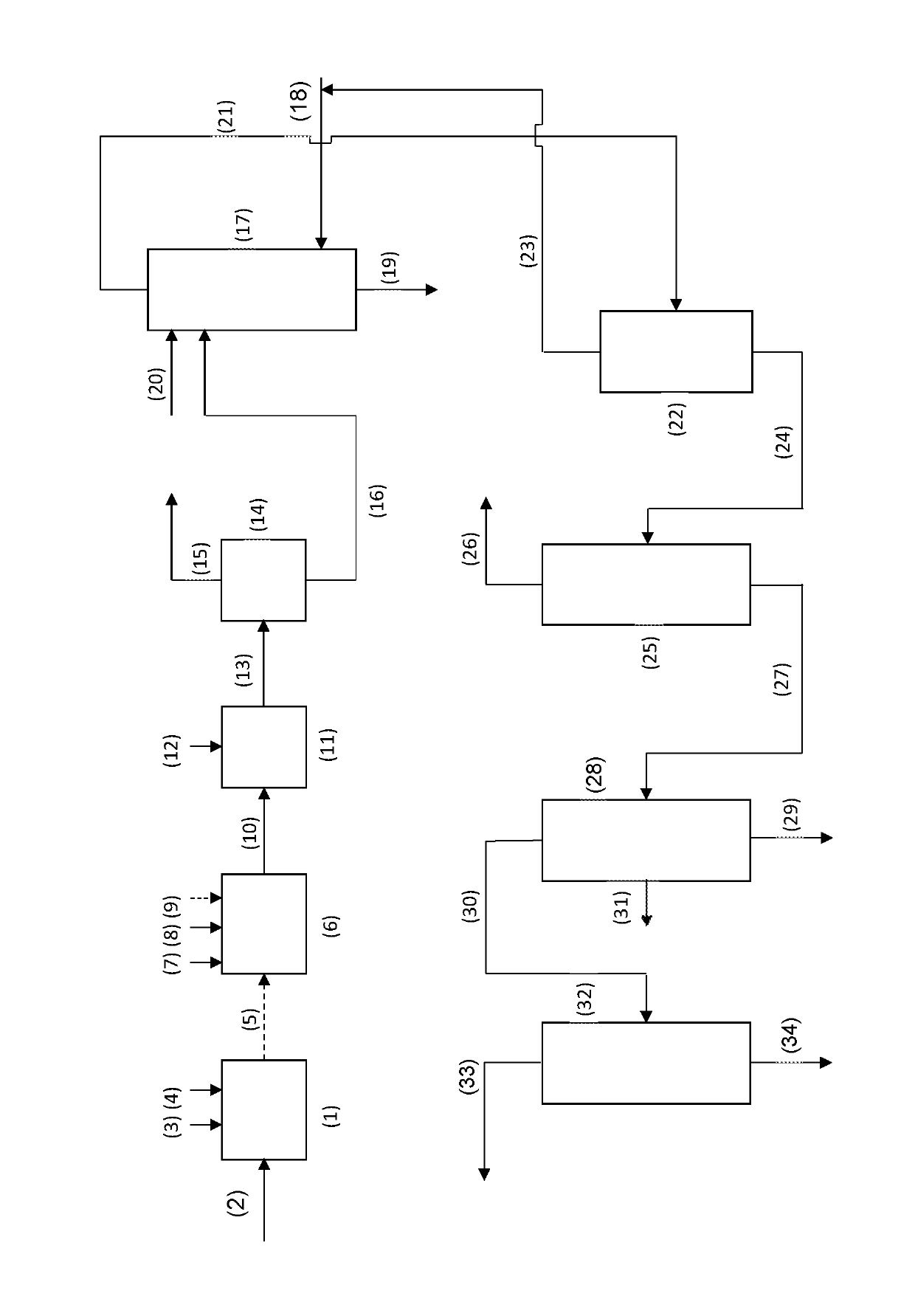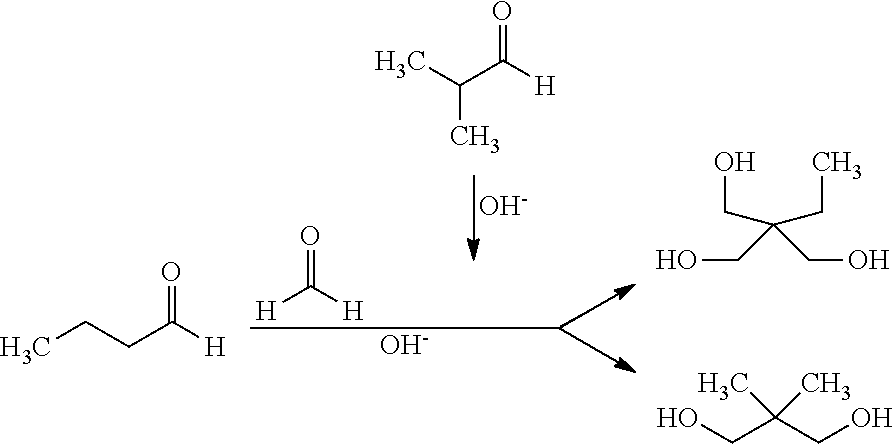Method for the combined production of polyols in the presence of an inorganic base
a technology of inorganic base and polyol, which is applied in the preparation of organic compounds, organic chemistry, chemistry apparatus and processes, etc., can solve the problem of lowering the risk of temperature peak formation in exothermic reaction in the second process step, and achieves the effect of avoiding cross-reactions, reducing the risk of temperature peak formation in exothermic reaction
- Summary
- Abstract
- Description
- Claims
- Application Information
AI Technical Summary
Benefits of technology
Problems solved by technology
Method used
Image
Examples
examples
[0049]The advantages of the process of the invention are shown by a coupled conversion of n-butanal (n) and i-butanal (i) to, respectively, trimethylolpropane (TMP) and neopentyl glycol (NPG). The examples have been broken down, inter alia, as a function of the addition, the process control (continuous vs. batch) and the reactor type used:
[0050]
ProcessReactantAddition ofExamplestepProduct(butanal)reactants / process / reactor 1-51TMPnIndividual substance / batch / flask 6-102NPGiIndividual substance / batch / flask111 + 2TMP + NPGn and iMixture / batch / flask12-141 + 2TMP + NPGn and iSeparate / continuous / stirred tank cascade15-181 + 2TMP + NPGn and iSeparate / batch / flask19-221 + 2TMP + NPGn and iSeparate / continuous / tube
I. Examples 1-5—Individual Batchwise Preparation of TMP (Flask)
[0051]The Cannizzaro reaction for preparation of trimethylolpropane was conducted in a 2 l four-neck flask equipped with stirrer, internal thermometer and two dropwise addition vessels.
[0052]In accordance with the equivale...
PUM
| Property | Measurement | Unit |
|---|---|---|
| temperature | aaaaa | aaaaa |
| temperature | aaaaa | aaaaa |
| mol % | aaaaa | aaaaa |
Abstract
Description
Claims
Application Information
 Login to View More
Login to View More - R&D
- Intellectual Property
- Life Sciences
- Materials
- Tech Scout
- Unparalleled Data Quality
- Higher Quality Content
- 60% Fewer Hallucinations
Browse by: Latest US Patents, China's latest patents, Technical Efficacy Thesaurus, Application Domain, Technology Topic, Popular Technical Reports.
© 2025 PatSnap. All rights reserved.Legal|Privacy policy|Modern Slavery Act Transparency Statement|Sitemap|About US| Contact US: help@patsnap.com


